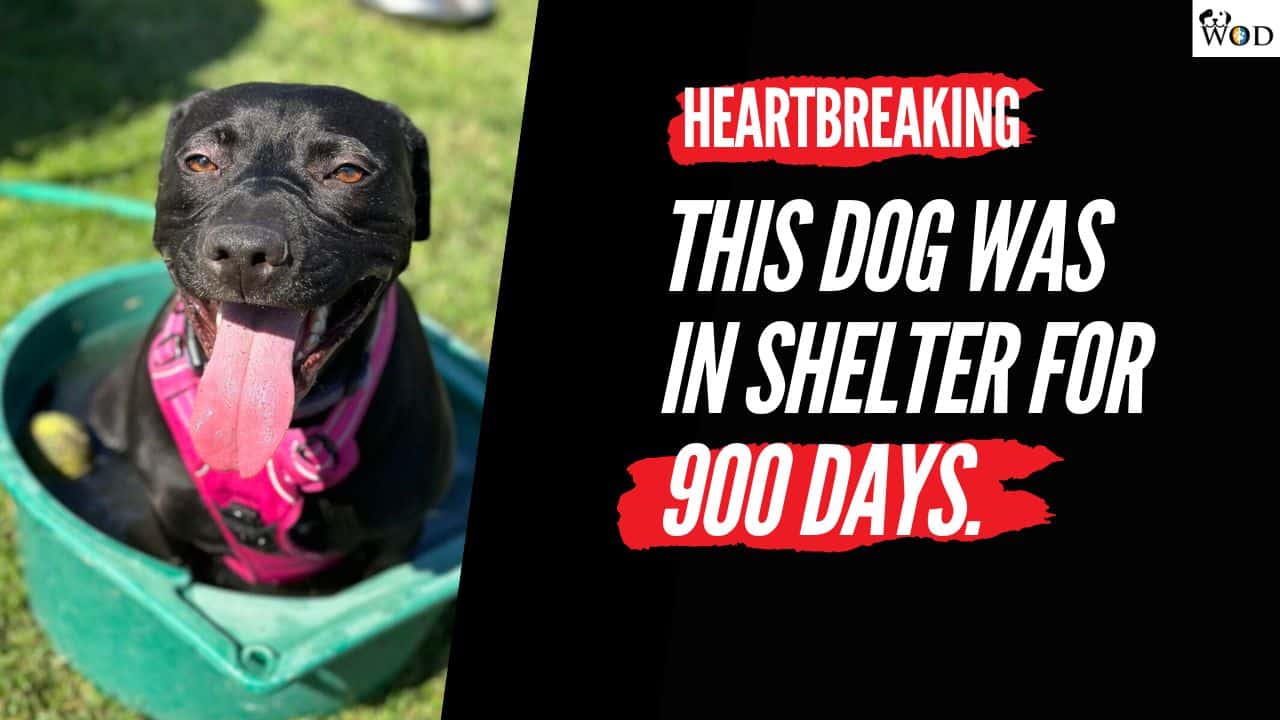If your dog doesn’t eat his food, you might be tempted to leave it out until he changes his mind. But perpetual availability can make the food even less valuable to your dog. Moreover, the food can go bad. The opposite is often the better course of action.
You should take your dog’s food away if he doesn’t eat it because taking the food away can raise its perceived value and can motivate your dog to finish it the next time it is made available. But first, ensure that his lack of interest in food isn’t due to a medical reason.
So, if you want to know the following:
- If you should remove your dog’s food when he doesn’t eat it
- Why it’s best to remove your dog’s meal if he turns his nose up at it
- How to get a picky dog to eat his food
Then you’ll love the detailed info you’ll find in this guide.
Let’s dive right in!
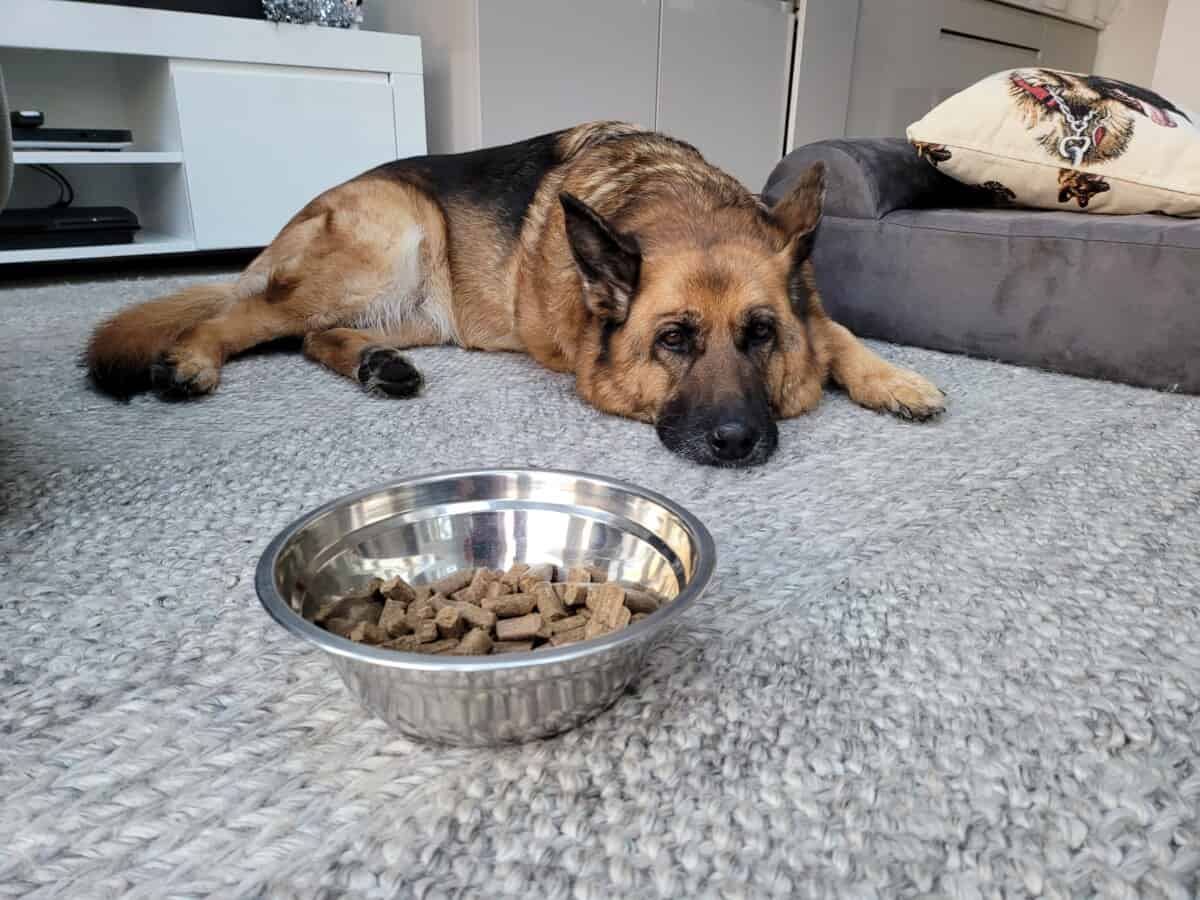
Should You Take Away Your Dog’s Food If He Doesn’t Eat It?
Picky Eating, Behavior & Discipline
It’s the right thing to remove your dog’s bowl if he fails to eat his meal. Dogs need to understand routine, which allows them to thrive. When you set a routine, it instills discipline, and a well-disciplined dog is a good dog.
“Your picky dog will quickly catch on that when you take away his food, it isn’t coming back for quite a while! That way, he’ll appreciate meal times more and understand when it’s time to eat.”
World of Dogz
Some crafty dogs will hold out for treats or table scraps. However, never give in to offering your dog “people food,” as you will inadvertently turn your doggo into a picky eater. You will unintentionally condition him to wait for better things, and this will make doggy feeding times a nightmare!
As the owner of a German Shepherd, here’s what I do…
After putting my dog’s bowl down, I wait for 10-15 minutes. If she shows disinterest and does not eat the meal, I remove the bowl, and I’ll try again an hour later. Should my dog still refuse her food, I remove it until the next scheduled meal time, which is 10 hours away for her.
However, if you only feed your dog once daily, the next mealtime might equate to the following day. This is okay. Eventually, your dog will be hungry enough to eat.
Don’t worry; your pup won’t starve, as dogs can easily go a couple of days without eating as long as they have access to fresh, clean water.
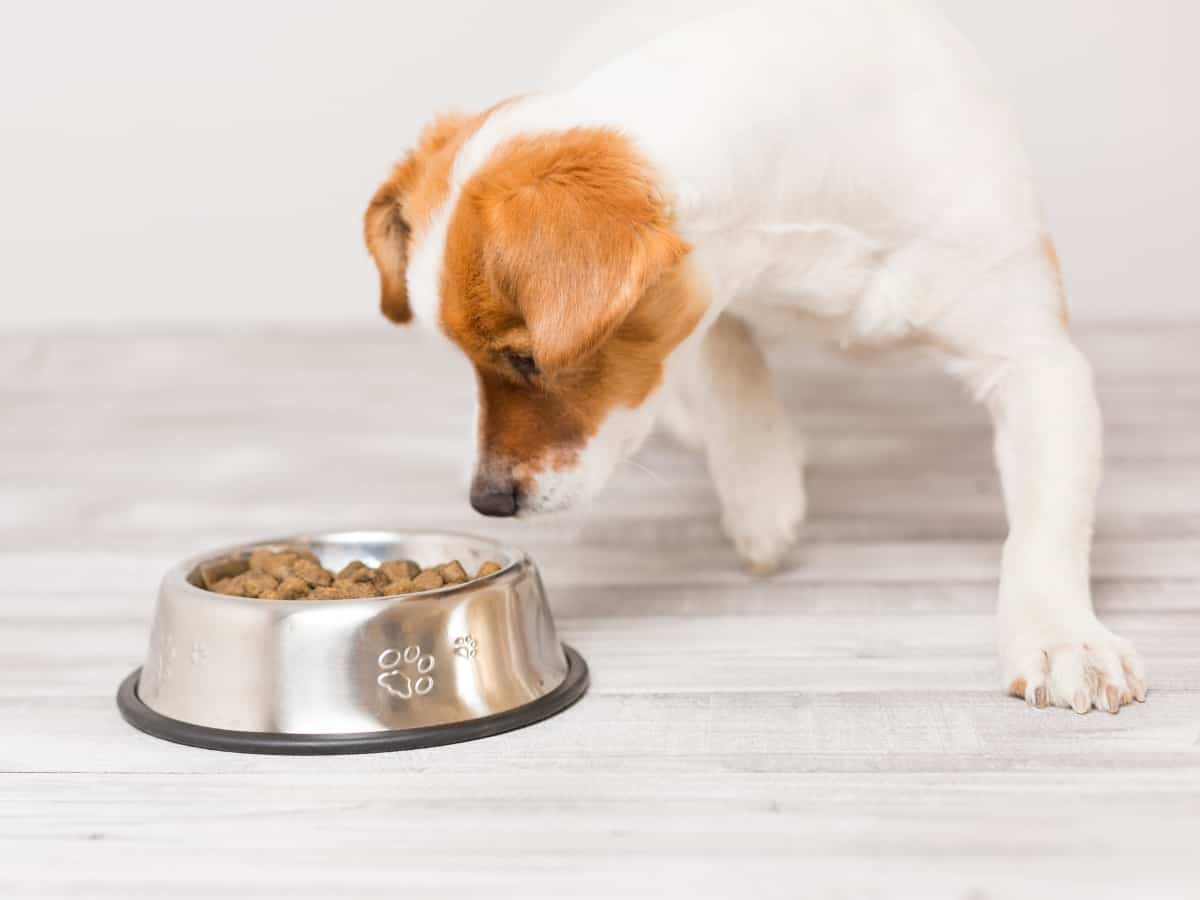
Dog Food Will Go Bad If Left Out All Day
Another reason why leaving your dog’s food out all day is a wrong choice is because dog food can take a few hours to 24 hours to go bad depending on the circumstances, like the humidity conditions, a pest in the area, and microbes in the atmosphere.
Wet food can become a food poisoning hazard after a few hours in the open, especially if it attracts flies. In contrast, kibble can take up to 24 hours to become a serious health risk.
Does that mean you can leave food out for your dog up to that point? Not really.
The consequences of leaving dog food out start within 5 minutes of it being out. If your dog knows that the food will be there even if he doesn’t finish it immediately, he will not be as motivated to finish it. Moreover, the food can become less appetizing after a while as it is formulated for immediate consumption.
This brings up the controversial topic of free feeding.
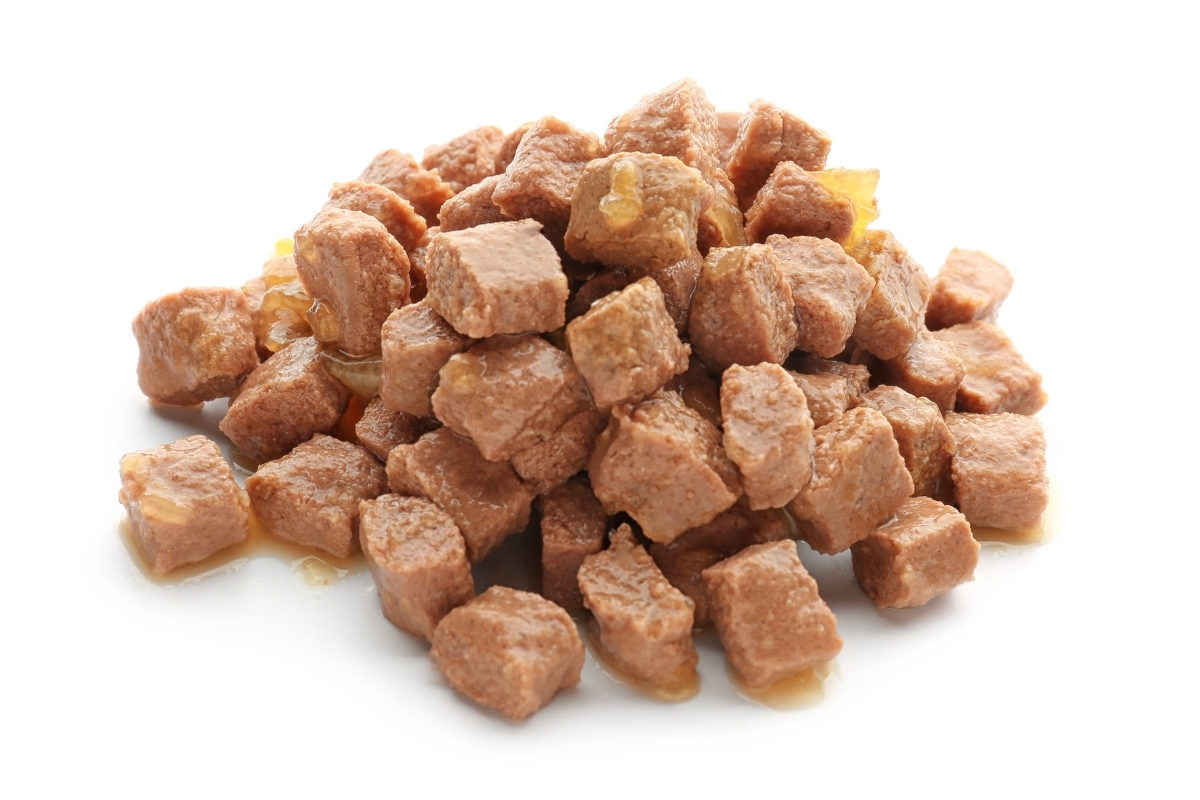
Free Feeding
A dog that is free-fed gets to have his food pretty much anytime he wants from a perpetually available mound of dog food. If leaving food out is so dangerous, why is free feeding a thing?
There are contexts and situations where free feeding is justified. But even when a nutritionist or a vet recommends it, one has to switch portions of food in the bowl to keep the food fresh.
There are a few instances where the dog’s teeth hurt due to poor oral health or his stomach issues slow down his eating, where free feeding is a solution. But even then, leaving the same portion of food out all day can be a poor choice.
Moreover, if you leave the food outside, you have to take measures to keep birds away from dog food and keep it insect-free.
Most often, free feeding isn’t the ideal solution if it is meant to fix a dog’s picky eating behavior.
Free feeding should never be a permanent solution to get picky eaters to eat their food. You must find alternative ways to get your dog to eat.
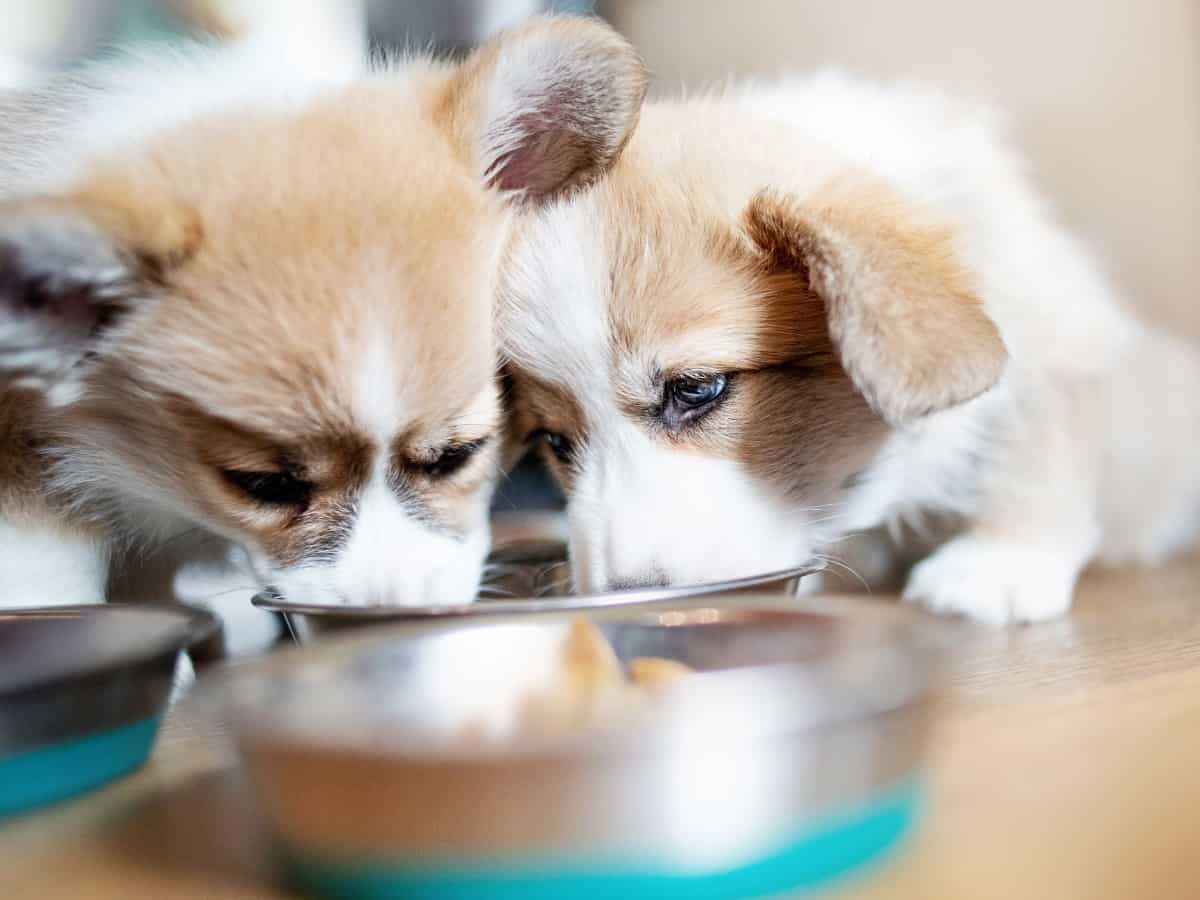
How To Get A Picky Eater To Eat Dog Food
If your dog doesn’t seem to want to settle for his average food, you might get frustrated but may not know what to do. Taking away the food might seem too cruel but leaving it out actually endangers your dog.
So what do you do?
Use the different tips and tricks in this section to make your dog more interested in his food.
1. Take Your Dog’s Food Away Until The Next Feeding Time
Number 1. on the list is the subject of this article! If you’re sure that there is no medical reason for your dog’s picky behavior, taking away his food after he refuses to eat it can encourage him to accept the food he is given the next time he is due for a meal.
2. Rule Out Medical Reasons
If your dog fails to show interest in his food despite temporarily taking it away and then putting it down again, you must consider medical causes like allergies, stomach problems, or dental pain.
Taking your dog to the vet is the best solution, especially if your dog seems uninterested in a range of food items, particularly treats. The vet can diagnose him with one of many possible medical conditions that lead to a loss of appetite.
Among other things, allergies and gastrointestinal diseases can trigger a disinterest in food. Sometimes it is gum disease or toothache that discourages eating, or you may have a senior dog that has lost his appetite.
3. Enhance the Meal’s Texture and Flavor
Instead of giving your dog better-tasting treats, you should focus on improving the taste of the food he is being offered. You can do this by:
- Warming the food.
- Adding water to dry food.
- Pouring a topper on top of his food (see below).
- Feeding a mixed dry and wet diet. You can even mix dog food brands.
4. Add A Food-Topper
Sometimes making your dog’s food slightly more delicious can do wonders. Why make your dog settle for less when you can give him more?
There are a range of food items you can mix with kibble or add to the top to make it more palatable. A range of commercial dog food toppers are also available.
Almost any aromatic food that your dog would eat with serious interest is food that can be used as a topper. Here are 15 Easy Foods To Mix With Dry Dog Food (For Fussy Eaters), but as a quick reference, my dog enjoys tuna, steak, chicken, and yogurt.
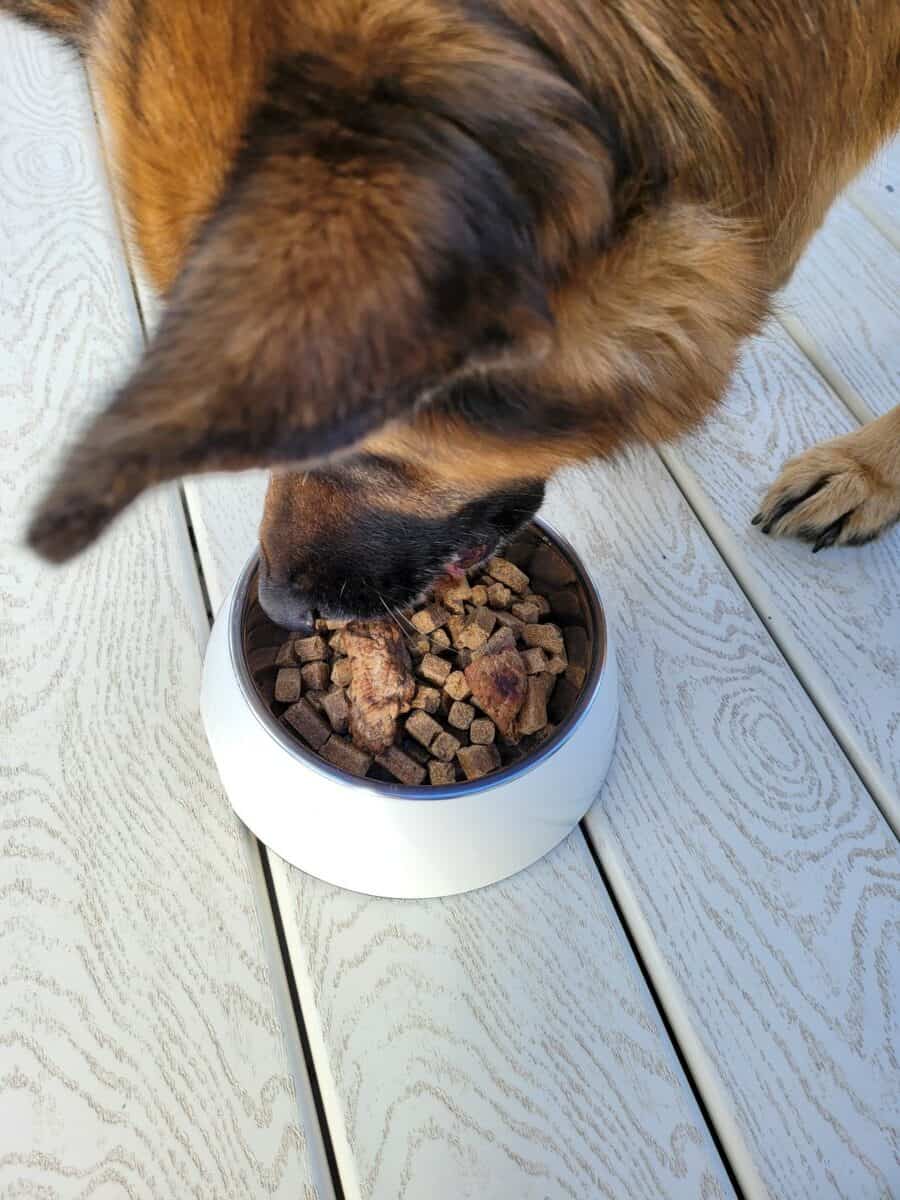
5. Exercise Your Dog
Sometimes the disinterest in food is simply due to a lack of hunger. If you skip walks, you cannot call your food-averse dog a picky eater. He is just maintaining his figure!
By walking your dog, you can ensure that he is sufficiently exercised and in need of the calories he is fed. It is healthy overall and can cure picky eating by working up an appetite.
Please don’t resort to this if you’re not sure that your dog is underexercised. Look up the ideal exercise duration for your specific dog breed to be sure he is getting enough.
6. Use A Feeding Toy or a Puzzle Toy
A puzzle toy uses a dog’s playful nature and turns food into a reward for being playful. Interactive food dispensing toys are a great idea if your dog gets bored of eating – after all, not all dogs are food-motivated like the Labrador.
Check out the Outward Hound Dog Brick Puzzle Toy from Amazon, which lets your doggo use his hunting skills to find his food. I love this toy as it’s a great way to engage your dog and even keeps anxious dogs busy when they become bored or picky.
KONG toys are also great feeding toys. The KONG Classic is cone-shaped and can be stuffed with kibble, which makes mealtimes more exciting.
7. Adjust Food Portions
Regarding calories, you need to double-check your dog’s weight and breed for food portions. It might be possible that your dog isn’t finishing his food because he has finished the food he was supposed to have!
If your dog’s weight has dropped, or if he exercises less, or is a senior dog, then his feeding requirements might be lower. But you might be trying to feed him more to restore his weight!
8. Try Dog Food As A Reward
If your dog tries to grab his treat before even seeing it whenever you offer it to him, you can try using his kibble as a treat. This method’s limit is that you cannot give him an entire bowl of food as a treat unless you’re training, of course. And if you push it too far, your dog loses motivation.
Rewarding a picky eater with food he hates is like getting paid in monopoly money and unwashed socks instead of actual cash. You might fall for it once, but it cannot be a long-term compensation strategy.
9. Quit Feeding Table Scraps
Table scraps are often the reward for looking cute and begging for food. Like most rewards, they can raise the threshold of what your dog finds acceptable. By feeding table scraps, you may unintentionally raise your dog’s taste standards to the point where kibble doesn’t even seem like food to him.
Holding back the scraps might make you feel cruel, but it is definitely not bad for your dog.
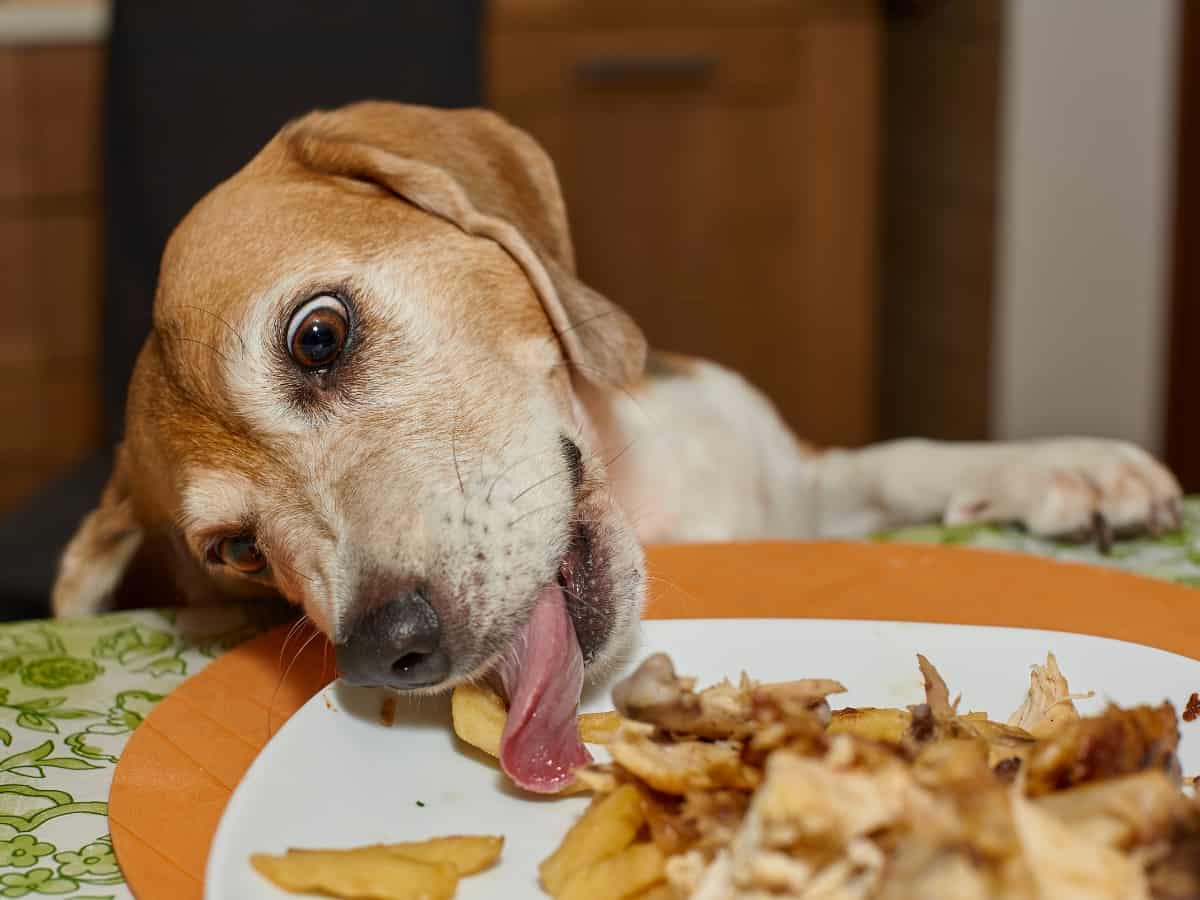
10. Pretend To Like The Dog Food Yourself
One way to get your dog interested in his food is to pretend to like it yourself. We are social beings, which is why we accept weird fashion and art if high-status people seem to like them.
Dogs are also social and perceive you as being of higher status. When you pretend to chomp up kibble, you can also influence your dog to really want it.
How good of an idea this is depends on how good you are at pretending to have kibble from a spare bowl without getting it in your mouth!
11. Reduce Random Treats
As mentioned, random treats can raise the threshold of what your dog finds tasty. You don’t want to reinforce his high standards by feeding him better-tasting treats if he is a picky eater.
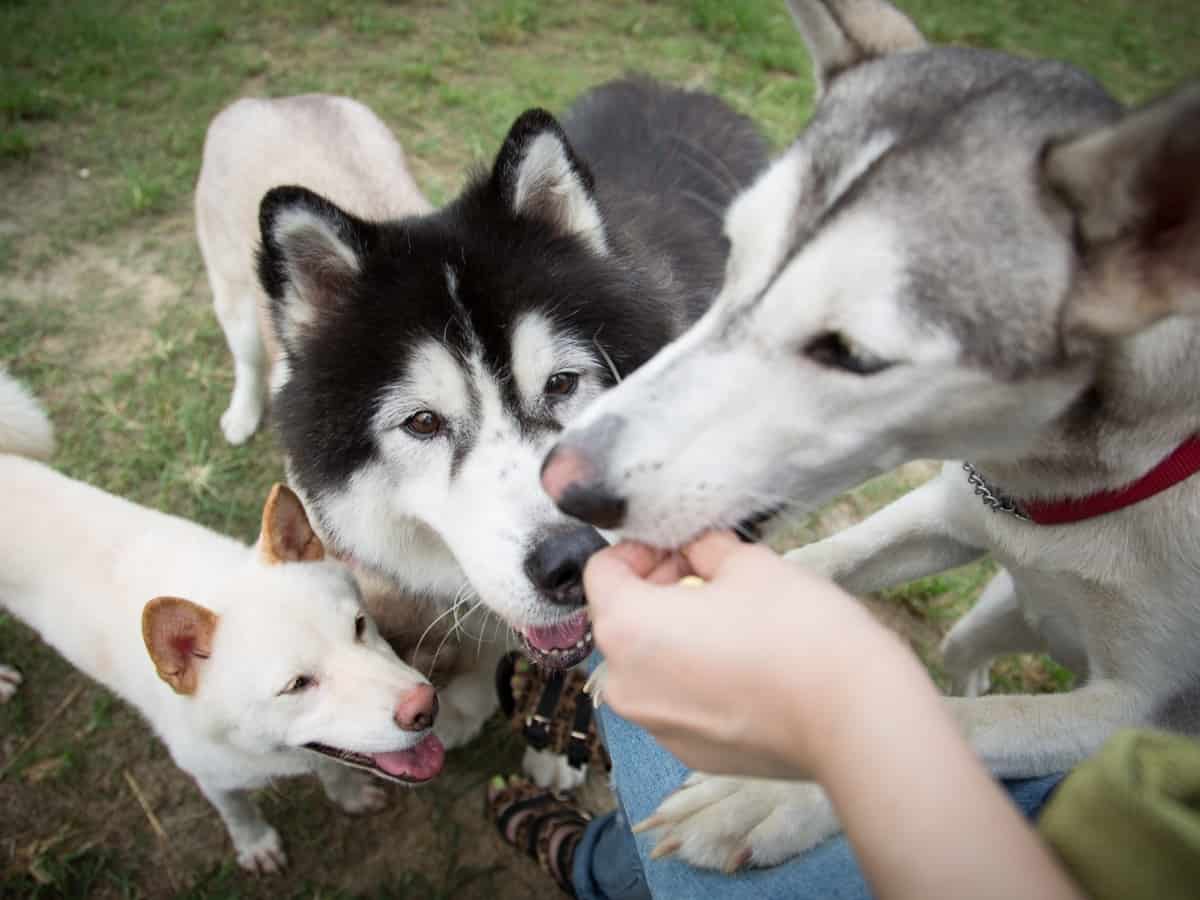
12. Use Contrast Bias To Make His Food More Appealing
There are specific instances where you can use a dog’s disgust with particular food to trigger hunger for the alternative. Let’s suppose your dog hates Kibble A. If he has been eating Kibble B for a while and decides to get picky, you can pour Kibble A into his bowl and let him walk away.
Then you can add kibble B to another bowl and watch him gladly eat it. Reminding your dog that things could be worse can make him grateful. It is the dog mom version of “eat your food coz there are people starving elsewhere.” Eat your food coz there are dogs having worse kibble elsewhere!
Final Thoughts
Dogs can get picky for a wide range of reasons. One tactic to get a fussy dog to eat is to take his food away until the next meal time.
However, there are some instances when you shouldn’t remove your pup’s food:
- Illness or medical condition – If you suspect your dog is sick, feeding little and often can work wonders. After all, humans prefer ‘picking at their food’ when unwell. However, you should consider a vet visit if the inappetence continues for a day or two.
- Free feeding – If you choose to free feed your dog, then he is used to food lying around for him to graze on at leisure, so removing his food defeats the purpose of free feeding.





